CAA News Today
New in caa.reviews
posted by admin — January 27, 2017
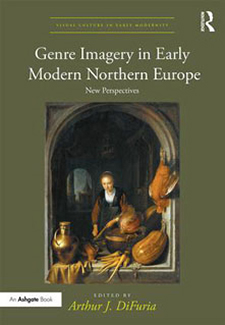 Wayne Franits reviews Genre Imagery in Early Modern Northern Europe: New Perspectives, edited by Arthur J. DiFuria. The eight essays “challenge” and “transcend” traditional studies on this topic “by exploring the complex, heterogeneous reception of such imagery among early modern viewers,” and they achieve this “noteworthy goal” with “varying degrees of success.” Read the full review at caa.reviews.
Wayne Franits reviews Genre Imagery in Early Modern Northern Europe: New Perspectives, edited by Arthur J. DiFuria. The eight essays “challenge” and “transcend” traditional studies on this topic “by exploring the complex, heterogeneous reception of such imagery among early modern viewers,” and they achieve this “noteworthy goal” with “varying degrees of success.” Read the full review at caa.reviews.
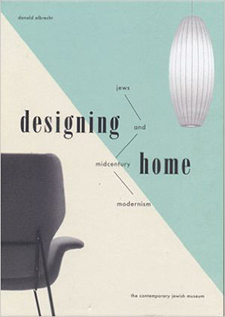 Deborah Lewittes discusses the exhibition catalogue for Designing Home: Jews and Midcentury Modernism, produced by the Contemporary Jewish Museum in San Francisco. Offering “a fresh take on the popular topic of twentieth-century domestic design,” the “elegant” and “graphically stunning” book is “a work of scholarly importance” and “provides interesting cultural tidbits.” Read the full review at caa.reviews.
Deborah Lewittes discusses the exhibition catalogue for Designing Home: Jews and Midcentury Modernism, produced by the Contemporary Jewish Museum in San Francisco. Offering “a fresh take on the popular topic of twentieth-century domestic design,” the “elegant” and “graphically stunning” book is “a work of scholarly importance” and “provides interesting cultural tidbits.” Read the full review at caa.reviews.
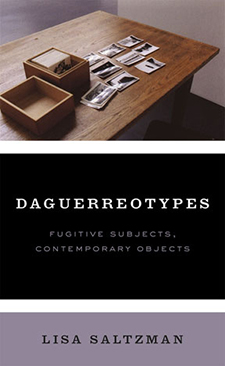 Astrid Köhler examines Daguerreotypes: Fugitive Subjects, Contemporary Objects by Lisa Saltzman. The volume “distinguishes itself from most other theories of photography, both in content and approach, via a lucid analysis” that “brings together heterogeneous objects that share a distinctive relation to time, identity, and memory.” Read the full review at caa.reviews.
Astrid Köhler examines Daguerreotypes: Fugitive Subjects, Contemporary Objects by Lisa Saltzman. The volume “distinguishes itself from most other theories of photography, both in content and approach, via a lucid analysis” that “brings together heterogeneous objects that share a distinctive relation to time, identity, and memory.” Read the full review at caa.reviews.
Art Journal Editorial Board Seeks New Member
posted by admin — January 24, 2017
CAA invites nominations and self-nominations for one individual to serve on the Art Journal Editorial Board for a four-year term: July 1, 2017–June 30, 2021. Candidates may be artists, art historians, art critics, art educators, curators, or other art professionals; institutional affiliation is not required. Art Journal, published quarterly by CAA, is devoted to twentieth- and twenty-first-century art and visual culture.
The editorial board advises the Art Journal editor-in-chief and assists her or him in seeking authors, articles, artists’ projects, and other content for the journal; performs peer review and recommends peer reviewers; guides its editorial program and may propose new initiatives for it; and may support fundraising efforts on the journal’s behalf. Members also assist the editor-in-chief to keep abreast of trends and issues in the field by attending and reporting on sessions at the CAA Annual Conference and other academic conferences, symposia, and other events in their fields.
The Art Journal Editorial Board meets three times a year, with meetings in the spring and fall plus one at the CAA Annual Conference in February. The spring and fall meetings are currently held by teleconference, but at a later date CAA may reimburse members for travel and lodging expenses for New York meetings in accordance with its travel policy. Members pay travel and lodging expenses to attend the conference in February. Members of all editorial boards volunteer their services to CAA without compensation.
Candidates must be current CAA members in good standing and should not be serving on the editorial board of a competitive journal or on another CAA editorial board or committee. Members may not publish their own work in the journal during the term of service. CAA encourages applications from colleagues who will contribute to the diversity of perspectives on the Art Journal Editorial Board and who will engage actively with conversations about the discipline’s engagements with differences of culture, religion, nationality, race, gender, sexuality, and access. Nominators should ascertain their nominee’s willingness to serve before submitting a name; self-nominations are also welcome. Please send a letter describing your interest in and qualifications for appointment, a CV, and your contact information to: Chair, Art Journal Editorial Board, College Art Association, 50 Broadway, 21st Floor, New York, NY 10004; or email the documents or inquiries to Joe Hannan, CAA editorial director. Deadline: April 17, 2017.
Art Journal Seeks Editor-in-Chief
posted by admin — January 24, 2017
The Art Journal Editorial Board invites nominations and self-nominations for the position of editor-in-chief for the term July 1, 2018–June 30, 2021 (with service on the Art Journal Editorial Board in 2017–18 as editor designate, and in 2021–22 as past editor). Art Journal, published quarterly by CAA, is devoted to twentieth- and twenty-first-century art and visual culture.
Working with the editorial board, the editor-in-chief is responsible for the content and character of the journal. He or she solicits content, reads all submitted manuscripts, sends submissions to peer reviewers, and provides guidance to authors concerning the form and content of submissions; develops projects; makes final decisions regarding content; and may support fundraising efforts on the journal’s behalf. A candidate may be an artist, art historian, art critic, art educator, curator, or other art professional. The editor-in-chief works closely with CAA’s New York staff.
The editor-in-chief attends the three meetings each year of the Art Journal Editorial Board— held in the spring and fall by teleconference or in New York, and in February at the CAA Annual Conference—and submits an annual report to CAA’s Board of Directors. CAA may reimburse the editor for travel and lodging expenses for spring and fall New York meetings in accordance with its travel policy, but the editor pays his or her own expenses for the Annual Conference.
The position usually requires one-half of an editor’s working time. CAA provides financial compensation for course release, usually to an editor’s employer.
Candidates must be current CAA members in good standing and should not be serving on the editorial board of a competitive journal or on another CAA editorial board or committee. CAA encourages applications from colleagues who will contribute to the diversity of perspectives on the Art Journal Editorial Board and who will engage actively with conversations about the discipline’s engagements with differences of culture, religion, nationality, race, gender, sexuality, and access. Nominators should ascertain their nominee’s willingness to serve before submitting a name; self-nominations are also welcome. A CV, a letter of interest from the nominee, and at least one letter of recommendation must accompany each nomination. Please mail to: Art Journal Editor-in-Chief Search, College Art Association, 50 Broadway, 21st Floor, New York, NY 10004; or email the documents or inquiries to Joe Hannan, CAA editorial director. Deadline: April 3, 2017. Finalists will be interviewed on the afternoon of May 4, in New York.
New in caa.reviews
posted by admin — January 20, 2017
Amanda Cachia visits Electronic Superhighway (2016–1966) at Whitechapel Gallery in London. The “ambitious exhibition” covers “fifty years of digital culture” and considers “how the world’s ceaseless flow of electronic information and unrelenting proliferation of images have come to impact contemporary art.” Read the full review at caa.reviews.
Lauran Whitworth reviews Art AIDS America, organized by the Tacoma Museum of Art and the Bronx Museum of the Arts. Aiming “to be the most comprehensive exploration of the impact of AIDS on the course of American art,” the “powerful” show is “haunted by loss and erasure but simultaneously teeming with verve and resistance.” Read the full review at caa.reviews.
Elizabeth M. Molacek discusses the Power and Pathos: Bronze Sculpture of the Hellenistic World exhibition, curated by Jens Daehner and Kenneth Lapatin of the Getty Villa. “A feast for the eyes,” the exhibition provided “an unprecedented opportunity” to see nearly fifty objects and “succeeded in demonstrating the significance of bronze and defining the trajectory of monumental sculpture in the Hellenistic period.” Read the full review at caa.reviews.
Anna Blume reads Images Take Flight: Feather Art in Mexico and Europe, 1400–1700, edited by Alessandra Russo, Gerhard Wolf, and Diana Fane. The “scholarly and magnificent book” features thirty-three essays “that reveal how feathers, birds, and images of flight became defining signifiers within art, thinking, and history during the geographical expansion of Europe into the Americas.” Read the full review at caa.reviews.
J20 Art Strike Closure
posted by admin — January 19, 2017
 CAA is taking part in the J20 Art Strike, an Act of Noncompliance on Inauguration Day. We apologize if this has caused you any inconvenience, but we consider this action important to take. This call concerns more than the art field. It is made in solidarity with the nation-wide demand that on January 20 and beyond, business should not proceed as usual.
CAA is taking part in the J20 Art Strike, an Act of Noncompliance on Inauguration Day. We apologize if this has caused you any inconvenience, but we consider this action important to take. This call concerns more than the art field. It is made in solidarity with the nation-wide demand that on January 20 and beyond, business should not proceed as usual.
For more information on the J20 Art Strike, including the long list of art critics, artists, curators, and institutions taking part please visit the J20 Art Strike website.
Online registration for the Annual Conference, February 15-18 in New York, will remain open.
We will be back in the office on January 23, 2017.
New in caa.reviews
posted by admin — January 13, 2017
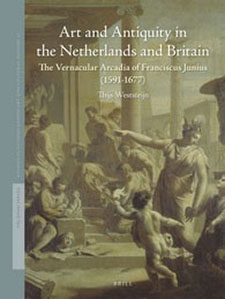 Michael Yonan visits Wordplay: Matthias Buchinger’s Drawings from the Collection of Ricky Jay at the Metropolitan Museum of Art. The artist “was born without legs or hands” and created micrography, “a technique whereby minutely drawn words create an image.” The “small but excellent” exhibition managed to “illuminate the life of a little-known historical figure” and “examine a historically significant art form.” Read the full review at caa.reviews.
Michael Yonan visits Wordplay: Matthias Buchinger’s Drawings from the Collection of Ricky Jay at the Metropolitan Museum of Art. The artist “was born without legs or hands” and created micrography, “a technique whereby minutely drawn words create an image.” The “small but excellent” exhibition managed to “illuminate the life of a little-known historical figure” and “examine a historically significant art form.” Read the full review at caa.reviews.
Margit Thøfner reviews Art and Antiquity in the Netherlands and Britain: The Vernacular Arcadia of Franciscus Junius (1591–1677) by Thijs Weststeijn. This “well-researched, thoughtful, and timely” book argues “for the seminal role” played by Junius’s The Painting of the Ancients in Three Books “within the history of early modern Netherlandish art theory and also in the broader European tradition.” Read the full review at caa.reviews.
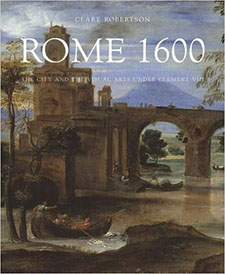 Jeffrey Fraiman reviews Clare Robertson’s Rome 1600: The City and the Visual Arts under Clement VIII. It is a “comprehensive study of the plenitude of projects commissioned by various patrons” in the “tumultuous and transforming” time during the reign of Clement VIII. The publication “transports readers to Rome circa 1600” and “will surely inspire valuable new directions in research.” Read the full review at caa.reviews.
Jeffrey Fraiman reviews Clare Robertson’s Rome 1600: The City and the Visual Arts under Clement VIII. It is a “comprehensive study of the plenitude of projects commissioned by various patrons” in the “tumultuous and transforming” time during the reign of Clement VIII. The publication “transports readers to Rome circa 1600” and “will surely inspire valuable new directions in research.” Read the full review at caa.reviews.
caa.reviews publishes over 150 reviews each year. Founded in 1998, the site publishes timely scholarly and critical reviews of studies and projects in all areas and periods of art history, visual studies, and the fine arts, providing peer review for the disciplines served by the College Art Association. Publications and projects reviewed include books, articles, exhibitions, conferences, digital scholarship, and other works as appropriate. Read more reviews at caa.reviews.
Pearson at the CAA Conference
posted by admin — January 12, 2017
 The Pearson Art team is excited to be a part of the upcoming CAA Conference in New York City!
The Pearson Art team is excited to be a part of the upcoming CAA Conference in New York City!
Come Visit Us at the Booth!
Stop by Pearson’s booth #505/507 to take part in our student-lead Revel demonstrations. All demo participants will be entered into a raffle to win the grand prize of an iPad mini! While at the booth you will also be able to see the new 6th edition of Stokstad & Cothren’s Art History.
Please join us in honoring the memory of Art History’s lead author, Marilyn Stokstad, at our booth reception at 3:00 pm on Friday, February 17th. We will also be hosting a Manhattan’s for Marilyn reception following the Marilyn Stokstad: A Memorial Roundtable session at 5:30 pm later that same day. All are welcome to attend.
In addition, Pearson is proud to announce the Marilyn Stokstad Graduate Student Scholarship which has been created to help pass on Marilyn’s legacy to the next generation of Art History teachers. We will have more details on this opportunity for your students available at the booth.
Participate in a Focus Group
On Thursday, February 16th & Friday, February 17th, we will be hosting a series of focus groups. We’re looking to connect with faculty members who specifically teach Art History survey courses. Each session is 90 minutes and participants will receive a $100 honorarium. Light snacks and refreshments will be served.
Interested in signing up? Please complete this brief survey to RSVP.
Space is limited so please reply right away if you are able to attend. We will try to accommodate as many respondents as possible.
Thank you and we are looking forward to seeing you in New York City!
Sincerely,
The Pearson Art Team
2017 Recipients of CAA’s Awards for Distinction
posted by admin — January 09, 2017
CAA announces the recipients of the 2017 Awards for Distinction, which honor the outstanding achievements and accomplishments of individual artists, art historians, authors, conservators, curators, and critics whose efforts transcend their individual disciplines and contribute to the profession as a whole and to the world at large.
CAA will formally recognize the honorees at a special awards ceremony to be held during Convocation at the 105th Annual Conference in New York, on Wednesday, February 15, 2017, at 5:30 PM. See the conference website for full details.
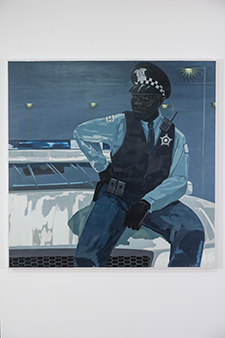
Kerry James Marshall, Untitled (policeman), 2015, acrylic on PVC panel, 60 x 60 inches, 60 9/16 x 60 1/2 x 2 3/4 inches (framed) © Kerry James Marshall. Courtesy of the artist and Jack Shainman Gallery, New York.
Among the winners this year is Kerry James Marshall, recipient of the 2017 CAA Artist Award for Distinguished Body of Work. In his 35-year career painting and making art, Marshall has depicted the African American experience through a medium that has often overlooked the lives of black Americans. His current retrospective at the Met Breuer, titled “Kerry James Marshall: Mastry” (October 25, 2016–January 29, 2017), brings together nearly 80 works by Marshall. Holland Cotter in The New York Times wrote of the show glowingly: “Mr. Marshall has absorbed enough personal history, American history, African-American history and art history to become one of the great history painters of our time.”
Kerry James Marshall biography
Faith Ringgold, the winner of the 2017 CAA Distinguished Artist Award for Lifetime Achievement, is widely considered one of the most influential living African American artists. Born in Harlem in 1930, she is an artist, feminist, activist, and educator who makes use of a variety of media, including painting, quilts, sculpture, performance, and children’s books. Civil Rights, racial justice, feminism, and art history are consistent themes. Ringgold earned BS and MA degrees in art from the City College, the City University of New York, and taught in the NYC public school system for almost twenty years. Since the 1970s Ringgold has been an activist and cofounder of several feminist and antiracist organizations, along with artist Poppy Johnson, art critic Lucy Lippard, and her daughter Michelle Wallace, among others.
Full list of 2017 CAA Awards for Distinction recipients
Charles Rufus Morey Book Award
Kishwar Rizvi
The Transnational Mosque: Architecture and Historical Memory in the Contemporary Middle East
University of North Carolina Press
Alfred H. Barr Jr. Award
Ruth Fine, ed.
Procession: The Art of Norman Lewis
Pennsylvania Academy of the Fine Arts, in association with the University of California Press
Alfred H. Barr Jr. Award for Smaller Museums, Libraries, Collections, and Exhibitions
Carmella Padilla and Barbara Anderson, eds.
A Red Like No Other: How Cochineal Colored the World
Skira Rizzoli, in association with the Museum of International Folk Art
Arthur Kingsley Porter Prize
Christine I. Ho
“The People Eat for Free and the Art of Collective Production in Maoist China”
The Art Bulletin, September 2016
Frank Jewett Mather Award for Art Criticism
Laura U. Marks
Hanan al-Cinema: Affections for the Moving Image
MIT Press
Distinguished Feminist Award
Joan Marter
Art Journal Award
Amy A. DaPonte
“Candida Höfer’s Türken in Deutschland as ‘Counter-publicity’”
Art Journal, Winter 2016
Distinguished Teaching of Art Award
Virginia Derryberry
Distinguished Teaching of Art History Award
Patricia Mainardi
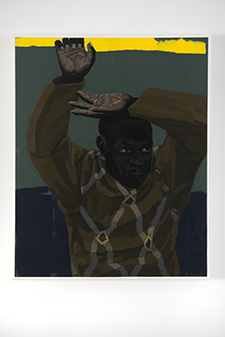
Kerry James Marshall, Untitled (Looking Man), 2016, acrylic on PVC panel, 30 1/2 x 24 1/2 inches, © Kerry James Marshall. Courtesy of the artist and Jack Shainman Gallery, New York.
Artist Award for Distinguished Body of Work
Kerry James Marshall
Distinguished Artist Award for Lifetime Achievement
Faith Ringgold
CAA/American Institute for Conservation Award for Distinction in Scholarship and Conservation
Tom J. S. Learner
Morey and Barr Award Finalists
CAA recognizes the 2017 finalists for the Charles Rufus Morey Book Award and the Alfred H. Barr Jr. Awards for their distinctive achievements:
Charles Rufus Morey Book Award Finalists
- Niall Atkinson, The Noisy Renaissance: Sound, Architecture, and Florentine Urban Life, Pennsylvania State University Press
- Elizabeth Kindall, Geo-Narratives of a Filial Son: The Paintings and Travel Diaries of Huang Xiangjian (1609–1673), Harvard University Asia Center
Alfred H. Barr Jr. Award Finalists
- Helen Molesworth, ed., Kerry James Marshall: Mastry, Museum of Contemporary Art, Chicago, and Skira Rizzoli (honorable mention)
- Barbara Haskell and Harry Cooper, Stuart Davis: In Full Swing, National Gallery of Art, Whitney Museum of American Art, and DelMonico Books
- Alisa LaGamma, Kongo: Power and Majesty, Metropolitan Museum of Art
- Adrian Sudhalter, Dadaglobe Reconstructed, Kunsthaus Zürich and Scheidegger & Spiess
Alfred H. Barr Jr. Award for Smaller Museums, Libraries, Collections, and Exhibitions Finalists
- Andreas Marks, ed., Tōkaidō Texts and Tales: Tōkaidō “gojūsan tsui” by Kuniyoshi, Hiroshige, and Kunisada, University Press of Florida (honorable mention)
- Zdenka Badovinac, Eda Čufer, and Anthony Gardner, eds., NSK from “Kapital” to Capital: Neue Slowenische Kunst—An Event of the Final Decade of Yugoslavia, Moderna galerija and MIT Press
- Geoffrey Batchen, Emanations: The Art of the Cameraless Photograph, Govett-Brewster Art Gallery and DelMonico Books
- Valérie Rousseau, Art Brut in America: The Incursion of Jean Dubuffet, American Folk Art Museum
Contact
For more information on the 2017 Awards for Distinction, please contact Tiffany Dugan, CAA director of programs. Visit the Awards section of the CAA website to read about past recipients.
New in caa.reviews
posted by admin — January 06, 2017
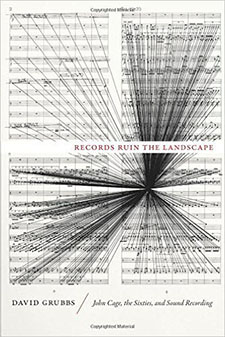 Peter Gena reads Records Ruins the Landscape: John Cage, the Sixties, and Sound Recording by David Grubbs. In this “excellent and meticulously researched book,” Grubbs examines “several early recordings along with a number of post-Cagian minimalists and free improvisers.” The volume is “highly recommended and a must-read for anyone probing new music and recordings.” Read the full review at caa.reviews.
Peter Gena reads Records Ruins the Landscape: John Cage, the Sixties, and Sound Recording by David Grubbs. In this “excellent and meticulously researched book,” Grubbs examines “several early recordings along with a number of post-Cagian minimalists and free improvisers.” The volume is “highly recommended and a must-read for anyone probing new music and recordings.” Read the full review at caa.reviews.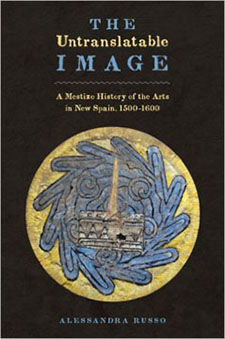 Eloise Quiñones Keber reviews Alessandra Russo’s The Untranslatable Image: A Mestizo History of the Arts in New Spain, 1500–1600. The author “extends and deepens her excursions into the creative and cultural dynamics of the art forms of early colonial New Spain” while advocating “their necessary place in contemporaneous Renaissance and early modern art history” in this “learned, insightful, and challenging” study. Read the full review at caa.reviews.
Eloise Quiñones Keber reviews Alessandra Russo’s The Untranslatable Image: A Mestizo History of the Arts in New Spain, 1500–1600. The author “extends and deepens her excursions into the creative and cultural dynamics of the art forms of early colonial New Spain” while advocating “their necessary place in contemporaneous Renaissance and early modern art history” in this “learned, insightful, and challenging” study. Read the full review at caa.reviews.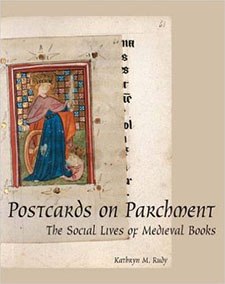 Sonja Drimmer examines Postcards on Parchment: The Social Lives of Medieval Books by Kathryn M. Rudy. Over the course of “three hundred riveting pages,” Rudy establishes “a new category of late medieval object, which she terms ‘parchment painting.’” The book is full of “intrepid flights of scholarship” and “like the manuscripts that it revives,” it “is prodigious with riches.” Read the full review at caa.reviews.
Sonja Drimmer examines Postcards on Parchment: The Social Lives of Medieval Books by Kathryn M. Rudy. Over the course of “three hundred riveting pages,” Rudy establishes “a new category of late medieval object, which she terms ‘parchment painting.’” The book is full of “intrepid flights of scholarship” and “like the manuscripts that it revives,” it “is prodigious with riches.” Read the full review at caa.reviews.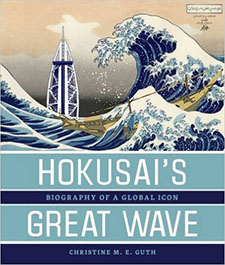 Gennifer Weisenfeld discusses Christine Guth’s Hokusai’s Great Wave: Biography of a Global Icon. “A landmark in multidisciplinary scholarly sophistication,” the volume “examines the long and storied history of one Japanese artwork as it has circulated around the world being imagined, reimagined, and reimaged, thereby fusing the local and global across time.” Read the full review at caa.reviews.
Gennifer Weisenfeld discusses Christine Guth’s Hokusai’s Great Wave: Biography of a Global Icon. “A landmark in multidisciplinary scholarly sophistication,” the volume “examines the long and storied history of one Japanese artwork as it has circulated around the world being imagined, reimagined, and reimaged, thereby fusing the local and global across time.” Read the full review at caa.reviews.caa.reviews publishes over 150 reviews each year. Founded in 1998, the site publishes timely scholarly and critical reviews of studies and projects in all areas and periods of art history, visual studies, and the fine arts, providing peer review for the disciplines served by the College Art Association. Publications and projects reviewed include books, articles, exhibitions, conferences, digital scholarship, and other works as appropriate. Read more reviews at caa.reviews.
Report from Arts Advocacy Day 2015
posted by admin — March 31, 2015
Hillary Bliss is CAA development and marketing manager.

Last week CAA sent two representatives to participate in the twenty-eighth annual Arts Advocacy Day in Washington, DC. Anna Cline, CAA development and marketing assistant, and I joined 550 grassroots advocates representing forty-eight states to lobby for strong public policies and increased funding for the arts. CAA also supported the event, which is organized by Americans for the Arts, as a national cosponsor.
Monday, March 23
Cline and I attended a full day of training that included legislative and political updates, in-depth briefings on our three primary “asks” (more on those later), and facts and figures to make a compelling case for the arts. We also heard an inspiring keynote address by Jane Chu, the recently appointed chairman of the National Endowment for the Arts (NEA). A role-play demonstration for congressional visits was incredibly helpful in illustrating how advocacy teams can manage the varying personalities and political agendas of senators, representatives, and their staffs to communicate clear messages and secure commitments of support in the form of caucus enrollment or letters addressing particular funding levels or policy positions. The most important takeaway was to strategically couple facts and figures—whether they be economic impact reports, matching-fund statistics, or art education’s effect on drop-out rates and SAT scores—with personal stories to create memorable and meaningful visits with legislators.
The three primary issues for Arts Advocacy Day were:
NEA Funding: We sought support for a $155 million budget for the NEA in the fiscal year 2016 Interior Appropriations bill. The broad reach and impact of the NEA can not be overstated: the agency awards approximately 2,300 grants per year to organizations in every US congressional district, reaches more than 38 million people through live art events, and helps to leverage roughly $600 million in matching funds from other state, local, and private sources. Closer to home, CAA has received support from the NEA every year since 2010 for ARTspace, a free and open component of the Annual Conference.
Arts in Education: We urged Congress to support $30 million for the Arts In Education (AIE) programs in the fiscal year 2016 Labor-Heath and Human Services-Education appropriations bill and retain it as a distinct grant competition for programs that strengthen the arts as a core academic subject of learning. Consolidation into an appropriations bill would risk compromising the program. We also sought support for retaining the arts in the definition of core academic subjects and for strengthening equitable access to the arts in the reauthorization of the Elementary and Secondary Education Act (ESEA).
Tax Reform: Since many arts organizations operate as nonprofit entities, tax reform regarding charitable giving is a critical issue. We asked Congress to preserve incentives for donations by protecting full value tax deductions for all forms of charitable gifts; we also advised against the adoption of “caps” or “floors” for deductions. We also urged Congress to make the IRA charitable rollover permanent so that donors can achieve the greatest impact with their planned giving. We also asked representatives to support the Artist-Museum Partnership Act, which would allow artists to take an income tax deduction for the fair market value of their work when they donate it to charitable collecting institutions.
There was no shortage of issues this year: advocates addressed arts in health, net neutrality, protection of wireless technology for the arts and media, and visa processes for foreign guest artists in short training sessions throughout the day. You can download American’s for the Arts’ 2015 Congressional Arts Handbook for facts and figures on all of these issues.
Closing the prelude to Arts Advocacy Day was the Nancy Hanks Lecture on Arts and Public Policy, this year given by the television writer and producer Norman Lear at the John F. Kennedy Center for Performing Arts. You can view Lear’s moving lecture, introduced by the hip-hop recording artist Common, on YouTube.

Tuesday, March 24
The packed Congressional Arts Kick-Off on Tuesday marked the official start of Arts Advocacy Day on Capitol Hill and featured speakers such as Representative Louise Slaughter (D-NY) and Representative Leonard Lance (R-NJ), cochairs of the Congressional Arts Caucus. Senator Tom Udall of New Mexico received the Congressional Arts Leadership Award in recognition of his distinguished service on behalf of the arts.
Cline and I were on separate advocacy teams representing the New York City area that included undergraduate and graduate students and representatives from arts organizations such as Actors’ Equity Association, Fractured Atlas, POV, and others. We met with the offices of Representatives Carolyn Maloney (NY-12), Grace Meng (NY-6), Jerrold Nadler (NY-10), Lee Zeldin (NY-1), Peter T. King (NY-2), Steve Israel (NY-3), Kathleen Rice (NY-4), Gregory W. Meeks (NY-5), and Hakeem Jeffries (NY-8). Overall the meetings went extremely well. Our groups were able to address the key public policy and funding issues mentioned above, as well as to communicate the work of CAA and its members.
In a visit with Nadler’s office, Cline thanked the congressman for his vigorous efforts to pass the American Royalties Too (ART) Act, which would ensure that visual artists are compensated when their original artwork is resold; she also offered CAA’s continued support for this legislation. Though a meeting was originally scheduled with a member of his staff, Rep. Israel met with my team to discuss the NEA budget. As a member of the House Committee on Appropriations—and more specifically, the Subcommittee on Interior, Environment, and Related Agencies, which covers the NEA budget—Israel spoke about the budget process and stated that its current proposal includes $155 million for the NEA. Time will tell what the final approved NEA budget will be.

Visiting the congressional office buildings reinforces the fact that senators and representatives work for you. I noticed a marked difference in visits to representatives for whom we had a constituent on our team. Multiple staffers told us that they needed more vocal support for the arts to pass the legislation and public-funding increases we were requesting, so I encourage you to contact your legislators and express your support. Americans for the Arts has a useful site that includes not only information on issues and supporting materials like facts and figures, but also links to tools for finding and contacting your legislator.
Images
The US Capitol Building in Washington, DC (photograph by Hillary Bliss)
Senator Tom Udall of New Mexico accepting his Congressional Arts Leadership Award at the Congressional Arts Kick-Off event (photograph by Hillary Bliss)
My advocacy team after meeting with Representative Steve Israel. From left to right: Lawrence Lorchack, Actors’ Equity Association; Lynn Koos, New York University; Representative Steve Israel; Alison Ribellino, Towson University; Mary An, POV; and Linni Deihl, Andrew Anzel, and Haven G. Mitchell-Rose, New York University (photograph by Hillary Bliss)


